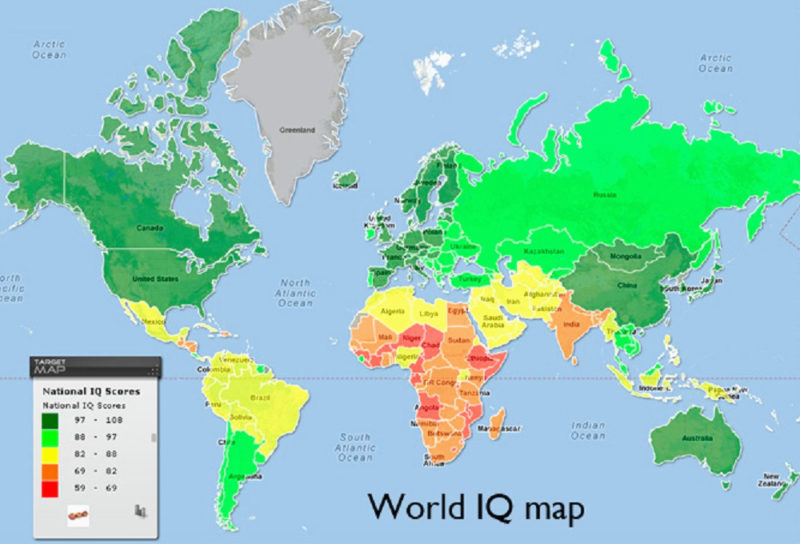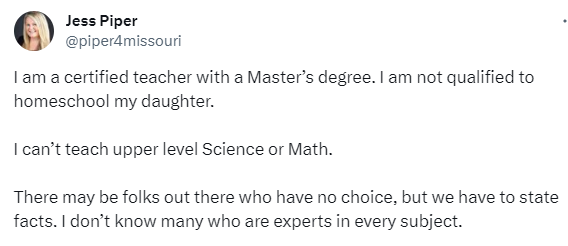
This is part of a series on intelligence and the decline of society. See this index.
One of the topics that I write most about is intelligence, but I only rarely write about it on this blog. Other than, this series, which wasn’t originally published on this blog, I have hardly ever mentioned it. In this series I am going to cover how intelligence is changing over time and what this means for education and more. Buckle in, there is a lot to discuss.
Blankslatism
Like feminism, there is another philosophy that virtually all rulers and institutions insist upon: blankslatism. Blankslatism is the belief that behaviors—especially those of groups—are entirely determined by environmental factors (e.g. personal choices, or more likely, external oppression) and not determined by one’s genetics. Its central tenant is that intelligence has no basis in genetics and that IQ tests are fake.
In many ways, blankslatism it is related to feminism: both philosophies believe that there are no inherent differences between men and women. To a blankslatist, concepts like sex, gender, and race are arbitrary social constructs.
Although many people do not know about blankslatism, it is extremely influential. Chances are unless you’ve actively considered the issue, you probably believe the tales that “anyone can be whatever they want to believe,” or, “you can succeed if you just work harder”, or, “Girl Power!” It is fairly trivial to see how blankslatism and feminism combine to reinforce modern progressive wokeism.
Dysgenic Theory
Perhaps the most famous finding in human psychology studies is the Flynn Effect:
In the last two decades, the steady rise in IQ scores tapered off and started to decline. This is known as the “Reverse Flynn Effect”—known by blankslatists as an “anti-immigration movement and pseudoscientific dysgenic or eugenic racist theory.” Well, now you know.
The basic idea is laid out in “Genius Famine” by Edward Dutton and Bruce G. Charlton, heavily referencing the work of Dr. Michael A. Woodley. In short, average real underlying general intelligence (‘g’) has been falling over the last century or two about 1 to 2 points per decade. This loss has largely been masked in testing by the Flynn Effect. The cause of this is twofold:
- Low IQ persons breed faster and more often
- Higher mutuational load (i.e. more mutations) in the population due to technological and medical advancements that have ended natural eugenics—evolutionary natural selection—of the human population.
When these two factors are combined, the average person is significantly less intelligent than the average person of a century ago. They have many environmental advantages over their ancestors, but their grey matter has far less potential. Charlton describes it thus:
A century ago, 50% of the population of England had the IQ required to be a qualified high school science teacher. Now it is only 16%. The population of qualified college science professors has fallen from 2% to less than 0.2%. Once we could easily fill all the important, high-skilled positions. Now we cannot.
I suggest taking some time to think about the consequences of what this means.
Economic Consequences
At Twitter, fellow blogger Free Northerner, suggested here that if employers raised pay and adequately trained their workers, then the labor supply would increase and labor shortages would end. This is incorrect.
The labor supply—of *qualified* workers—is already too restricted due to falling average intelligence. There are not enough qualified workers to meet demand and the supply is shrinking. Wages can only reallocate these workers, not improve shrinking supply. All that extra wages can do is chase ever increasing numbers of unqualified and untrainable workers due to falling average intelligence. Sure, the qualified workers benefit from higher wages, but companies—and society—ultimately lose.
There is a severe shortage of actual talent. Employers complain about being unable to hire well because they are forced to hire subpar employees: they can’t afford loyalty. Employees who are qualified get wrecked by the lack of loyalty that was designed by a corporate bureaucracy for handling unqualified workers. Unqualified workers are miffed at the difficulty of getting hired, but ever increasing numbers of employees are just not good at their jobs and shouldn’t be hired. This applies to all professions. However, since there are not enough qualified workers to fill the most skilled positions and someone has to be hired, everyone ends up “falling upward“, ensuring that virtually every position is filled with someone unqualified.
To demonstrate this, I created this back-of-the-napkin spreadsheet example to show how a 15-point drop in intelligence over one hundred years might affect employment if the job qualifications remained the same (or got tougher):

Since there are not enough qualified workers in the top tiers, they have to be filled by lower tier workers. This in turn causes there to not be enough qualified workers in the lower tiers. The process continues mismatching workers until all jobs are filled. Failing upwards means that a huge 78% of workers are unqualified based on historical IQ standards. Here are the percentage of qualified employees in each skilled tier:
- Tier 1: 12%
- Tier 2: 6%
- Tier 3: 6%.
What are the expected number of good high school teachers? 12%.
What are the expected number of good elementary school teachers? 6%.
What about cops? 6%.
Have you ever wonder why there are so many workers, such bureaucratic drones, unable to creatively and reasonably solve problems? They lack the intelligence to think outside-the-box. The ineffective bureaucratic regulatory State—populated by these workers—is only going to get larger and worse. It has to!
Absent policy changes, society will reduce services and industries that require a high IQ. This means a lower overall standard of living and infrastructure decline. Healthcare and insurance will get worse. Bridges, sewers, and drainage systems will break down and get worse. Groceries will cost more.
More and more of the population will be effectively intellectually disabled. A sizable portion of that 16% of the population will barely have the capacity to function in any modern job at all. You probably know these people as “Diversity Hires”, although this is a badly misleading term because it applies to members of any sex. race, or ethnicity. These are people with low intelligence that everyone knows cannot adequately do their jobs—regardless of training—but are hired anyway (for various reasons).
Because the demand for skilled labor is so high and supply is so low, wages are actually *too high*. It would be better if 80% of the population took lower paying, less skilled “jobs American’s won’t take.” STEM degrees should be harder to get, with higher standards. Loans should be more difficult to take out. This reduces competition for STEM jobs. Fewer workers causes rising wages for *qualified* workers. Remaining workers are forced into lower paying, lower skilled jobs that they are better at doing. Companies spend less on wages.
We need to *reduce* overall training, making it only available to the pre-qualified. The qualified get higher wages while the unqualified get lower wages, reducing overall wages and increasing productivity by allocating workers more efficiently.
This will of course result in the rationing of tier 1 services, like healthcare, but this is inevitable. It’s already happening. The market is already correcting itself, whether we do anything about it or not. It will just be uglier this way.
Intelligence in Education
The reason I’m pointing out that intelligence is falling and unqualified people are being hired is because this causes a corresponding degenerative impact which results in very few qualified—by historical standards—school teachers in their respective positions. Nearly everyone is underqualified, and their degrees and certifications are mostly irrelevant to job performance. Modern school teachers are really quite bad at their jobs. Case in point:
The typical home-schooling, above-average IQ mother will teach her two to four children at the same time over the course of a couple of hours each day. That’s all she needs to give her kids an education that approximates a public school. Indeed, her kids are likely to school higher on standardized tests than the average public school educated kid who attends classes for most of the day and only with kids their own age.
Keep this in mind as we discuss, in part 2, the loss of learning that most kids have experienced since the interventions of early 2020 began.


Pingback: Intelligence, Education, and Covid: Part 2
Pingback: Intelligence, Education, and Covid: Part 3
Pingback: Utilitarian Racism
Pingback: On Women, Part 4
Pingback: Substack
Pingback: Unlearning Inversion
Pingback: Nothing Works Anymore